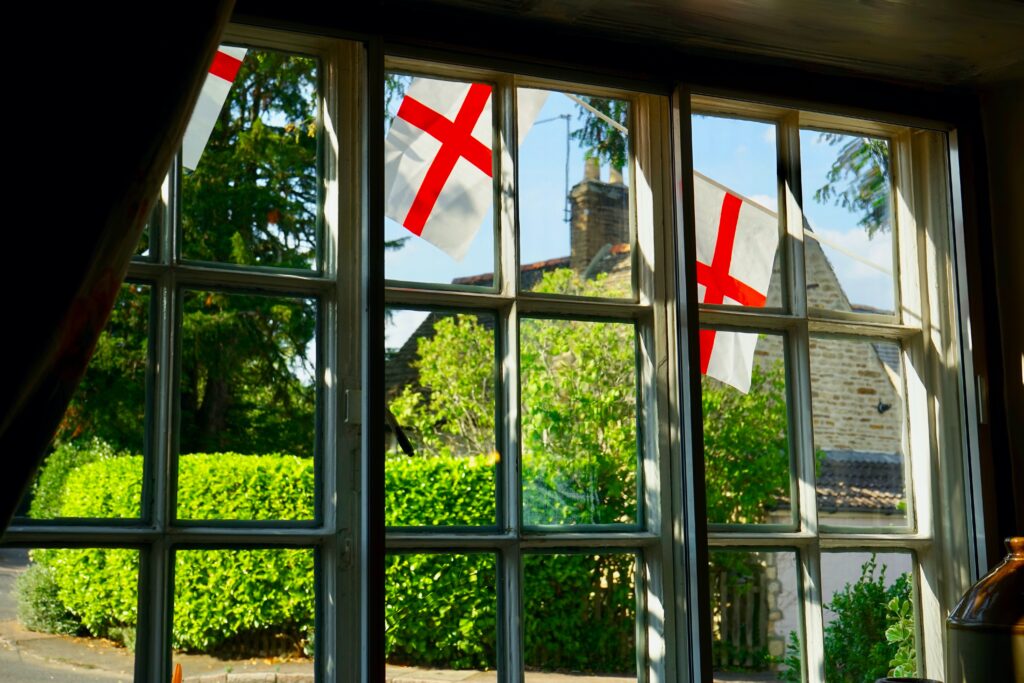St George’s Day – April 23: By George he’s got it!

St George’s Day 23 April
By George, he’s got it!
Who was St George, and how did he become patron saint of England? Former primary school teacher, Laura Steele of education resource experts PlanBee has the low-down
Who was St George?
Very little is actually known about the life of St George. However, we do know that he wasn’t English – he was born in what is now Turkey, in approximately AD 280. He was raised as a Christian and joined the Roman Army as a young man. He was tortured and then killed by the Emperor Diocletian, for refusing to renounce his Christian faith.
What is his connection to England?
St George’s emblem was a red cross on a white background. Legend has it that during the First Crusade to Jerusalem in 1098, St George appeared as a vision to lead the Christian knights during a siege. About 100 years later, King Richard III fashioned his army’s uniform on the cross of St. George.
How did he become the patron saint of England?
St George was declared a saint in AD 494 by Pope Gelasius. But it was not until 1350 that St George became the patron saint of England. King Edward III, who was the reigning monarch in England at that time, chose St George as the country’s patron saint as he was admired by many for his bravery in the face of terrible suffering. King Edward also created the Order of the Garter, which to this day is the highest order of chivalry. The badge representing the order shows St. George on horseback, slaying a dragon.
How do we celebrate St George’s Day?
St George’s Day has been observed in England since the early 15th century, and at that time was considered as important as Christmas. While it has lessened in significance, it is still celebrated by many, with activities such as traditional morris dancing, Punch and Judy shows, flying the English flag, and singing the hymn ‘Jerusalem’.
And what about the dragon?
This is the story that is most famously associated with St. George:
A knight named Sir George was travelling the land and came across a town that was being terrorised by a dragon. The inhabitants told him that a young maiden had to be sacrificed to the dragon every day, or the beast would destroy the entire town. Each day, the next poor girl was chosen by a lottery. That very morning, the King’s own daughter’s name had been called. On hearing this, Sir George vowed to save the princess and slay the dragon. He found the beast in his lair, and threw his spear at him. However, the dragon’s scales were so hard that they shattered the spear. Undeterred, Sir George unsheathed his sword and charged at the dragon, driving his weapon into the soft underbelly of the beast, killing him dead. Sir George took the princess back to the King, and the town celebrated.
This story did not appear in popular culture until around 500 years after St George’s death. Many historians believe it was developed and embellished in the Middle Ages. Regardless of whether the tale is true or not, due to this legend, as well as the manner of his death, St. George is a symbol of courage in the face of adversity, as well as the English ideals of honour, bravery and gallantry.
Flying the flag
The flag of England is derived from Saint George’s Cross, which is a red cross on a white background. It has been associated as an emblem of England since the Late Middle Ages, and was used alongside the Royal Banner in Tudor times. Today, the English flag is widely used at sporting events as a way of supporting English teams and participants.
Did you know?
St. George is also the patron saint of scouting. He was chosen as the qualities of St George reflect those desirable in a Scout: responsible, truthful, devoted to duty, brave, noble and dedicated to helping others. Every St George’s day, Scouts remind themselves of their Promise and Scout Law.




